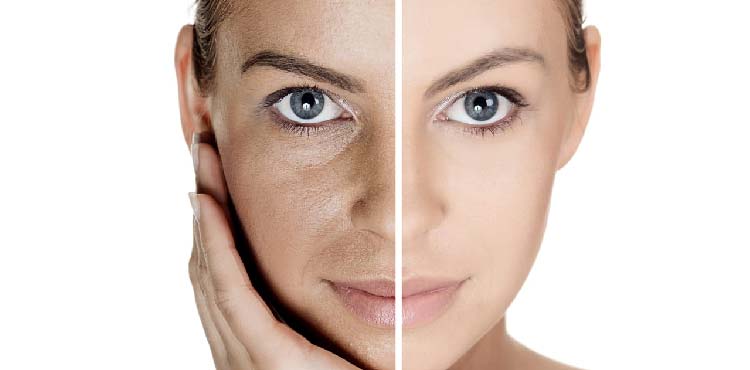
Uneven skin tone, dark spots, and pigmentation issues can be frustrating and affect your confidence. If you’re looking for ways to achieve effective pigmentation removal, it’s crucial to understand what treatments work and which ones may not deliver the desired results.
In this article, we’ll explore various pigmentation removal methods, separating the effective from the less successful options.
Understanding Pigmentation Issues
Before diving into pigmentation removal methods, let’s clarify what pigmentation issues entail:
- Hyperpigmentation: This condition results in dark patches or spots on the skin due to an excess of melanin, often caused by sun exposure, hormonal changes, or inflammation.
- Melasma: Melasma causes brown or gray-brown patches on the skin, typically on the face, and is often linked to hormonal changes, such as pregnancy or birth control use.
- Post-Inflammatory Hyperpigmentation (PIH): PIH occurs after an injury or inflammation of the skin, leaving behind dark marks or spots.
Now, let’s explore the methods for effective pigmentation removal.
Topical Treatments
- Hydroquinone: Hydroquinone is a skin-lightening agent commonly used to treat hyperpigmentation. It inhibits melanin production and can be effective for fading dark spots. However, long-term use should be monitored by a dermatologist.
- Retinoids: Retinoids, such as tretinoin (Retin-A), can help improve skin texture and reduce hyperpigmentation by increasing cell turnover. They are often used as part of a skincare routine for pigmentation issues.
- Vitamin C: Topical vitamin C serums can help brighten the skin and fade pigmentation over time. It also provides antioxidant protection against further damage.
Chemical Peels
- Glycolic Acid Peels: These peels exfoliate the skin’s top layer, helping to fade pigmentation and improve overall skin tone. A series of treatments may be needed for best results.
- Salicylic Acid Peels: Salicylic acid peels can be effective for treating both acne and post-inflammatory hyperpigmentation. They penetrate the skin and help unclog pores.
- Laser and Light Therapies
- IPL (Intense Pulsed Light) Therapy: IPL can target and reduce pigmentation issues, such as sunspots and age spots, by breaking down the excess melanin in the skin.
- Fractional Laser Resurfacing: Fractional laser treatments can stimulate collagen production and improve skin texture, reducing the appearance of pigmentation issues.
- Q-Switched Laser: Q-switched lasers are often used to treat specific types of pigmentation, like tattoo removal and melasma. They deliver precise energy to break down pigment.
Chemical Agents
- Tranexamic Acid: This acid can be used orally or topically to reduce pigmentation, particularly melasma. It works by inhibiting the production of melanin.
- Kojic Acid: Kojic acid is another skin-lightening agent that can be used in topical products to fade pigmentation.
Microdermabrasion
- Microdermabrasion is a non-invasive exfoliation treatment that can help improve the texture and appearance of the skin. While it may help with mild pigmentation issues, it is generally less effective than other treatments for significant pigmentation removal.
Microneedling
- Microneedling involves the use of tiny needles to create micro-injuries in the skin, which can stimulate collagen production and improve skin texture. It may help with some pigmentation issues, but it often requires multiple sessions for noticeable results.
What Doesn’t Work for Pigmentation Removal
- Topical Lightening Creams (Without Active Ingredients): Some over-the-counter lightening creams may not contain effective active ingredients like hydroquinone or retinoids. These may not yield significant results.
- Home Remedies: Home remedies like lemon juice, apple cider vinegar, or honey are often touted as pigmentation remedies. While they may provide some benefits, they are generally less effective than medically proven treatments.
- Sun Exposure: Exposing pigmented areas to the sun without protection can exacerbate pigmentation issues. Sunscreen is a must when addressing pigmentation.
Combination Approaches for Effective Pigmentation Removal
- In many cases, the most effective pigmentation removal strategies involve a combination of treatments tailored to your specific skin type and pigmentation issue. A dermatologist or skin care specialist can assess your skin, discuss your goals, and recommend a personalized treatment plan.
Prevention and Maintenance
Preventing further pigmentation issues and maintaining your results are crucial aspects of pigmentation removal. Here are some tips:
- Sun Protection: Always wear broad-spectrum sunscreen with at least SPF 30 to protect your skin from UV damage.
- Topical Products: Continue using recommended skincare products to maintain your results and prevent further pigmentation.
- Regular Follow-Ups: Regular check-ins with a dermatologist or skin care professional can help monitor your progress and make adjustments to your treatment plan as needed.
Conclusion
Effective pigmentation removal is possible through a variety of treatments, including topical products, chemical peels, laser therapies, and chemical agents. It’s essential to consult with a qualified dermatologist or skin care specialist to determine the best approach for your specific pigmentation issue.
Remember that consistency and patience are key to achieving the desired results, and sun protection is vital for preventing future pigmentation problems. By following a customized treatment plan and maintaining good skincare habits, you can achieve a more even and radiant complexion.











